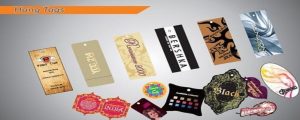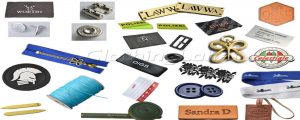Woven Label, Main Label, Care Label, Size Label, Satin Label
Woven labels are made up of threads woven together on a loom to deliver your design ideas and messages. Woven labels consist of two primary materials, these are composed of polyester and cotton.
Taken to be the face of a label on or attached to a package containing therapeutic goods, medicines, or other substances prominently shown, the name of the product or drug on each of these faces will be regarded as the main label.
A permanent label or tag, containing regular care information and instructions, is applied to a product so it may not become separated and remain legible during its life cycle.
The labels that you can print via standard inkjet will be horizontal, letter form on 8.5×11-inch paper. On this sheet, you can print two labels per page (the label takes up one-half a page). The labels that you print via thermal label printer will be vertical and 4 x 6 inches.
Cotton is known as one of the most popular fabrics to use in clothing labels because of its soft nature and broad adaptability. The cotton paper provides durable materials and pleasing functional capacity, plus the banners hold up well to wear and tear.
Emerency Call
Email Contact
Office Address
Our Customer Commitment
Frequently Asked Questions
If you are in the garments accessories business, then you know that sourcing products can be a challenge. There are so many options and it can be hard to find the right supplier. Sinha garment Export Oriented Garments Accessories Solution.
The materials, such as trims and ribbons, that go into clothing to add attractiveness are collectively called Accessories.
Some basic accessories include thread, zipper, interlining, button, for example snap button, plastic button, metal button, label, size label, wash care label, motif leather, plastic, batch metal, pocketing fabric, lining, velcro, elastic, cord, ribbon, toggles, rivets, collar bone.
In the fashion and clothing industry, the term ‘garment trimming’ refers to the function, benefit, or trait of supplemental material components that do not belong to the garment or apparel itself. Garment trimmings serve as enhancements to the visual characteristics of clothing and add a purpose to their design.
The quality of a product refers to how well its materials don’t have mixing errors, material errors, size faults, matching of color faults, cutting errors, and other shortcomings.
We’ll begin by classifying buttons into five major categories, including flat buttons, shank buttons, stud buttons, toggle buttons, and decorative buttons.
Labels provide insight into the materials used in making the garment. They inform how to take care of the garment and special safety instructions on it. They describe the scale of the garment. They convey the name of the maker. They market the brand.
A trimming is often used to embellish and add panache to clothes. The motifs consist of national names or brand names. The motifs can be embellished by embroidery, printing, or by the other method.
A garment label contains such details as its dimensions, the degree of its sturdiness, the fiber content, the fabric composition, the care inspection, the country of manufacturing, the brand name, and the logo or trademark. 4. A motif contains a brand name, logo, and other types of symbols.






